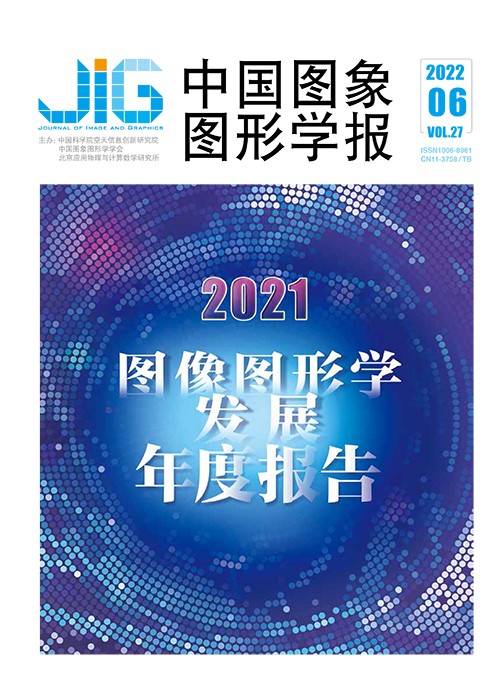
大脑多模态成像技术定量研究进展
叶慧慧1, 何宏建2, 方静宛1, 童琪琦3, 周子涵2, 刘华锋1(1.浙江大学现代光学仪器国家重点实验室, 光电科学与工程学院, 杭州 310027;2.浙江大学生物医学工程教育部 重点实验室, 生物医学工程与仪器科学学院, 杭州 310027;3.之江实验室健康医疗大数据研究中心, 杭州 311121) 摘 要
现代医学成像技术是脑科学研究和脑疾病诊断的利器,不同模态的成像技术提供不同的信息可协同表征脑部结构和功能。其中定量成像技术着眼于和生理、物理相关的内在参量,旨在提供更精准的信息。本文以正电子发射扫描成像(positron emission tomography,PET)和磁共振成像(magnetic resonance imaging,MRI)两种生物医学成像模态为例,针对性地讨论它们在定量刻画大脑微观结构和功能领域的发展状况,目前尚存的关键技术问题和未来的可能发展方向。围绕定量MRI,从表观参数定量开始,介绍其中的单参数定量的现状和不足,以及目前多参数同时定量的发展动态;围绕微观参数定量,介绍针对髓鞘成像的两大方法,包括多组分T2定量和基于超短回波时间髓鞘直接成像,介绍磁共振定量成像特别是磁共振扩散成像的可比较性和可重复性研究。围绕定量PET,从最广泛的代谢动力学模型——房室模型开始介绍,对生理参数与示踪剂摄取量的关系进行了详细描述,展开到定量的误差来源包括模型选择、图像质量以及输入函数测量误差3个方面进行分析,介绍最新进展包括硬件设备、图像重建方法以及定量分析方法。最后对MRI定量、PET定量以及PET/MRI定量领域进行了展望。
关键词
Research progress of quantitative multimodal brain imaging technology
Ye Huihui1, He Hongjian2, Fang Jingwan1, Tong Qiqi3, Zhou Zihan2, Liu Huafeng1(1.State Key Laboratory of Modern Optical Instrumentation, College of Optical Science and Engineering, Zhejiang University, Hangzhou 310027, China;2.Key Laboratory for Biomedical Engineering of Ministry of Education, College of Biomedical Engineering and Instrument Science, Zhejiang University, Hangzhou 310027, China;3.Research Center for Healthcare Data Science, Zhejiang Laboratory, Hangzhou 311121, China) Abstract
Advanced medical imaging technology facilitates human brain recognition and its disease diagnosis research like positron emission tomography (PET) and magnetic resonance imaging (MRI). The changes of structure, function, metabolism, and signaling pathways yield richer multimodal image data for disease diagnosis research. Traditional clinical imaging techniques are mostly based on qualitative interpretation. The signal intensity of acquired images are differentiated for normal tissues, resulting in uncertainty in image contrast due to the microscopic scaled structure and function changes in tissue disease pathology. It is an effective way to obtain accurate and reliable detection of lesion features while the tissue contrast changes intensively higher than the noise level. In comparison to qualitative medical imaging, the current measurement focuses on physiology and physics related parameters to generate its quantitative parameter map. Quantitative parameters have their own physical units in common and their quantitative values reflect the physiological and physical information of the object mathematically. Quantitative measurement of tissue is essential to physiopathological modeling. The relationship between image nuances and pathology, realize in-depth clinical data mining for accurate diagnosis based on the integration of effective model analysis. The quantitative integration of cross-modalities and multiple imaging mechanisms medical imaging has been developed in brain tumors and neuropsychiatric diseases. While quantitative imaging technology is challenging in clinical settings, no matter due to its long acquisition time or its different image presentation. The common quantitative PET and MRI measurements are based on data fitting from multiple measurement. The multiple measurements are time consuming and costly. The modeling and simulation of micro-physiological systems still need to be continuously developed and improved, including the development from static models to dynamic models. Our research review and discuss the key technical issues and development of existing quantitative imaging technologies for human brain microstructure and physiological function indicators detection through PET and MRI methods. The clinical applications and future directions are introduced as well. Specifically, we focus on the establishment of quantitative models, the measurement of quantitative parameters and imaging methods, the influencing factors in the measurement, and the clinical application of related technologies. First, the review of quantitative MRI is based on the current situation and deficiencies of single-parameter quantification and the development trendency of simultaneous multi-parameter quantification. Then, it introduces two methods of myelin imaging based on the quantification of microscopic parameters, including multicomponent T2 quantification and ultrashort echo based myelin imaging. An introduction to the comparability and reproducibility of magnetic resonance quantitative imaging is followed on, especially magnetic resonance diffusion imaging. Second, the review of quantitative PET is based on the most extensive metabolic kinetic model-the compartment model. To extend quantitative error sources like model option, image quality, and input functions, the relationship between physiological parameters and tracer uptake is clarified and three aspects of measurement error are analyzed in detail. The latest development is reviewed based on hardware equipment, image reconstruction methods and quantitative analysis methods. The future MRI quantification, PET quantification and PET/MRI quantification are briefly predicted further.
Keywords
multi-modal imaging quantitative magnetic resonance imaging (MRI) quantitative positron emission tomography (PET) simultaneous multi-parameter quantification myelin water faction quantification multi-center fusion compartment model
|



 中国图象图形学报 │ 京ICP备05080539号-4 │ 本系统由
中国图象图形学报 │ 京ICP备05080539号-4 │ 本系统由